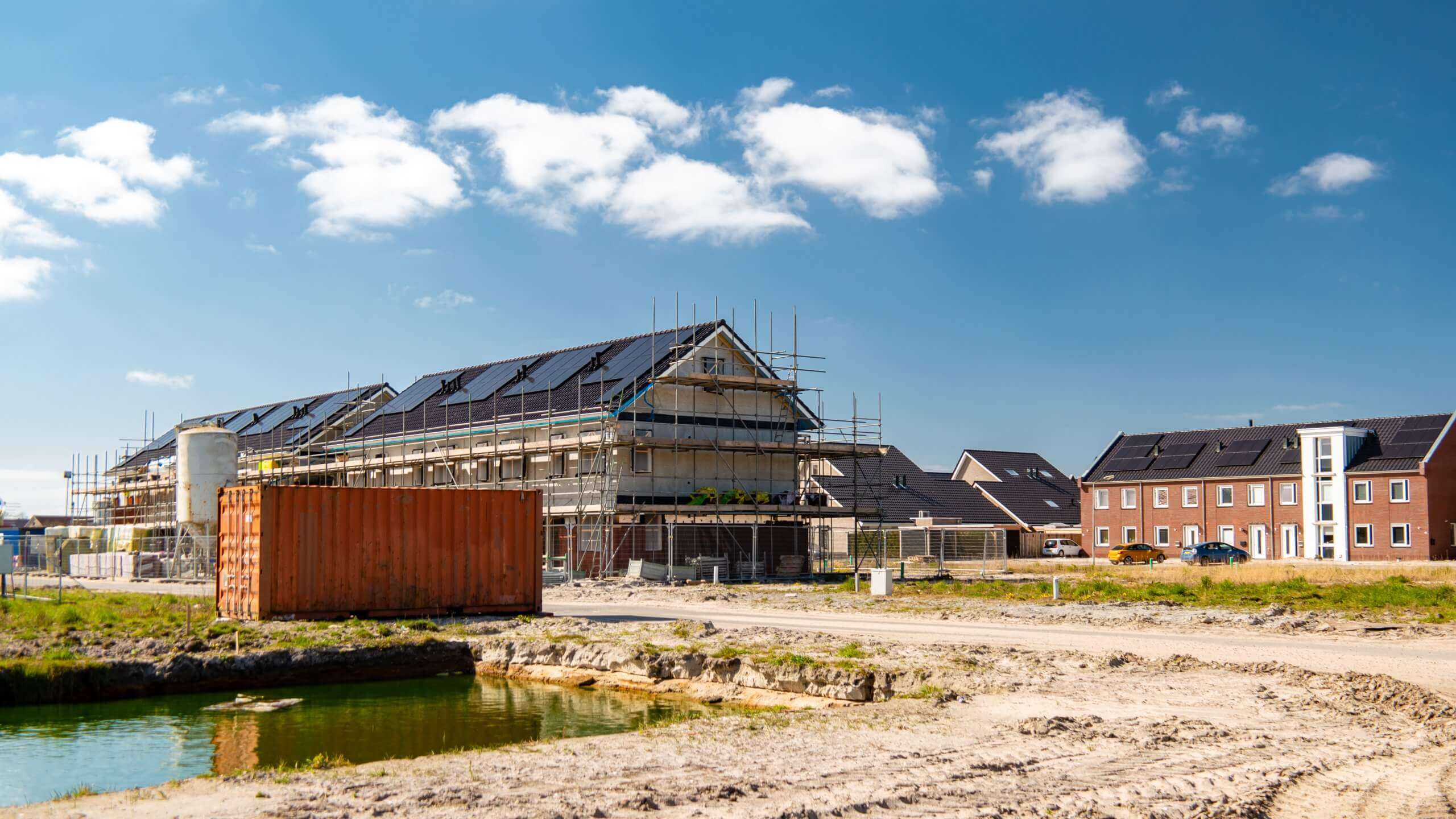Living Horizon Scanner: June 2025
26th June 2025
“The Spending Review, planning and regulatory reform, sustainability, supply chain assurance and building safety are just some of the legal issues dominating board agendas today. This latest edition of our sector horizon scanner summarises, at a glance, key news and resources for developers.”


Industry news
The UK government’s Spending Review was published on 11 June. Key items to note for the living sector (non-exhaustively) include:
- £39 billion for a new 10-year Affordable Homes Programme
- £4.8 billion in financial transactions from 2026-27 to 2029-30 to be managed by Homes England
- Planned investment in infrastructure and land remediation to deliver new housing schemes in partnership with the private sector
- a permanent, UK-wide Mortgage Guarantee Scheme to ensure consistent availability of mortgages for buyers with small deposits
- £2.5 billion in low-interest loans for social housing providers to boost new development;
- £1 billion to accelerate the remediation of social housing.
The Ministry of Housing, Communities and Local Government (MHCLG) has published ‘Speeding Up Build out’, a working paper aimed at delivering more houses more quickly and unlocking “stalled sites”. The main proposals in the paper and accompanying technical consultation (open until 7 July) include requirements for housebuilders to set a timeframe for delivering housing developments of more than 50 units before planning is granted; annual reporting on progress to meeting delivery programmes; a ‘Delayed Homes Penalty’; a ‘use it or lose it’ approach to completion of developments; and powers for councils to acquire where housebuilders deliberately sit on consented sites.
Commentators are suggesting the government’s Long Term Housing Strategy may be published in spring/summer 2025.
The National Audit Office has said that weaknesses in MHCLG’s developer contributions system (intended to fund essential local infrastructure like schools, roads, public transport, and affordable housing) are undermining councils’ ability to negotiate with developers. In a new report, it has called for improvements, including: evaluating initiatives that aim to help local authorities manage developer contributions effectively; reviewing how financial viability assessments are used; and making wider/better use of the Community Infrastructure Levy.
The UK government has announced launch of a new taskforce to unlock unused public land for housing development. It’s also announced creation of a new company between Network Rail and London & Continental Railways, to become operational later in 2025, which will attract public and private investment to develop brownfield sites, and have the potential to deliver 40,000 new homes over the next ten years. Four sites, across Newcastle, Cambridge, Manchester, and Nottingham, have so far been identified for development.
112 councils have called on the government to fund a ‘Green and Decent Homes Programme’ to upgrade social homes in England to a single retrofit fund for all social landlords. The councils have requested a minimum of £12billion over five years, alongside long-term funding certainty for two decades, to make social homes healthier, safer and more sustainable.
A recent right of light case may be helpful for developers. In Handstone Investments Limited -v- Abri Group Limited, the High Court refused an injunction to restrain development despite a right to light with which the development would interfere. The court found: the claimant was not in occupation (its interest in the office block was for investment purposes only); the claimant hadn’t acted promptly in bringing the application; the housing development was in the public interest; and there’d been no material complaint from the office block tenants. It’s important to note, however, that whilst an injunction to stop development wasn’t granted, the court did decide that damages would be an appropriate remedy.
The government has allocated £1.8 billion to local authorities and social housing providers to fund energy efficiency upgrades in up to 170,000 homes across England, as part of the Warm Homes Plan.
The Scottish government is scrapping plans to make homeowners switch to greener heating soon after buying a new home. Acting net-zero secretary Gillian Martin told MSPs that the draft Heat in Buildings Bill would no longer be put forward in its current form.
The government is consulting on proposals to raise minimum energy efficiency standards for privately rented homes in England and Wales by 2030.
The government recently consulted on proposals to change the way EPCs are produced and how they measure energy efficiency (the current plan is that these changes will happen during mid/late 2026). It’s now consulting on whether the minimum standards for residential properties should be raised to C, with a proposed timescale of 2028 for new tenancies and 2030 for existing tenancies. There hasn’t been much publicity about enforcement of the minimum standards, but it does appear to be happening: in Naveed v Bradford MDC, the First Tier Tribunal (Property Chamber) upheld the local authority’s £4,000 fine imposed on a landlord who let residential property with a rating below E. There are no current consultations on raising the required standard for commercial properties but that may be next on the horizon.
On 30 May, a new Code of Practice: Rights over land for electricity installation was published. It has been endorsed by RICS, the Central Association of Agricultural Valuers and the Energy Networks Association. It aims to provide best practice guidance to encourage timely and fair negotiation between the parties, and balance the interests of licence holders who install and operate the electrical infrastructure and landowners who are impacted by the equipment. Although a voluntary code, it’s expected to be influential in helping the parties reach quicker and fairer access agreements.
On 6 May 2025, the Town and Country Planning (General Permitted Development) (England) (Amendment) Order 2025 (SI 2025/560) was made. It changes permitted development rights for electric vehicle charging and air source heat pumps on domestic premises.
On 9 May 2025, the Mayor of London announced a “radical” new approach to greenbelt development to help address the housing crisis in London.

The recent case of Great Jackson Street Estates v The City of Manchester centred on a tenant developer’s attempt to modify/discharge leasehold restrictive covenants that were blocking a residential development in a regeneration area. The council was both planning authority and landlord. The council, as planning authority, agreed to grant planning permission subject to planning conditions. However, as landlord, it withheld consent for the development, relying on restrictive covenants in the developer’s lease. The developer applied, under section 84 of the Law of Property Act 1925, to modify or discharge the restrictive covenants. The Court of Appeal found that the council’s ability to control the redevelopment through the covenants constituted a practical benefit of substantial advantage. The council was using the restrictive covenants legitimately, in a manner consistent with its role as landlord in a regeneration area. Councils often wear two hats and may support a scheme as planning authority but resist as landlord to protect long-term estate management goals.
The High Court has given permission, in the John Lyons Charity case, for judicial review of certain provisions in the Leasehold and Freehold Reform Act 2024. The court held that provisions (not yet in force) relating to the calculation of property values for enfranchisement claims might breach the European Convention on Human Rights. The judicial review is being brought by various claimants who argue that imposition of a 0.1% cap of value on ground rent; removal of marriage value; removal of non-litigation costs; and provisions which require the valuation to assume that there are no intermediate leases, could detrimentally affect charities that depend on property assets for funding. The outcome of the judicial review hearing will be one to watch.
The second edition of the RICS Professional standard, Service charges in commercial property is due to launch in summer 2025 and will apply to all service charge periods commencing six months from publication.
The Law Commission has published an interim statement setting out provisional conclusions from its review of the security of tenure provisions in the Landlord and Tenant Act 1954. The Commission has provisionally concluded: the current ‘contracting out’ model and procedure are the best and will remain; the types of tenancies which benefit or are excluded from security of tenure will remain as existing; and 3) A second consultation will consider increasing the 6-month exclusion threshold to 2 years, meaning that a business tenancy granted for a fixed term of 2 years or less would not have security of tenure. The idea is to give greater flexibility in the short-term lettings market. As yet, no timescale is given for publication of the second consultation. We’ll continue to monitor and report developments.
Residual waste is currently subject to a standard landfill tax rate of £126.15/tonne. Inert waste is taxed at a much lower rate of £4.05/tonne. The government is now consulting on plans to transition to a single rate of landfill tax by 2030. The consultation closes on 21 July 2025.
The G15 group of London’s largest housing associations published a report which aims to provide “a practical framework for developers to work together with the affordable housing sector”.
The Competition and Markets Authority has published informal guidance, issued to the Builders Merchants Federation, effectively approving a proposed supply chain assurance initiative. Some of the key takeaways from the guidance may help other businesses seeking to implement their own sustainability/supply chain assurance initiatives.
MHCLG has published the Construction Products Reform Green Paper on wide-ranging plans for future regulation of construction products. Proposals include bringing all construction products within the general product safety regime; enhanced regulatory, surveillance and enforcement powers; development of a new single Construction Products Regulator; and civil and criminal penalties for manufacturers that engage in misleading practices or neglect their responsibilities regarding product safety. The consultation is the first step in what the government says will be a proactive process of engagement and consultation across the system in the medium to longer term.
The Law Society has published a practice note on climate risk and conveyancing for solicitors. It looks at examples of climate risks in different types of property transactions, advising on climate risk, and climate risk surveys.
From 14 May 2025, lettings agents will be subject to reporting and due diligence obligations over and above their money laundering regulations obligations, by virtue of financial sanctions reporting regulations. See here for information and guidance. In related news, the Office of Financial Sanctions Implementation has published its Property and Related Services Threat Assessment Report, which aims to help property sector stakeholders develop risk-based approaches to sanctions compliance.
We’ve reported previously that the London Trocadero v Picturehouse Cinemas case would be ‘one to watch’. Picturehouse claimed that Criterion arranged for its insurers to charge enhanced commission on insurance which it passed on to the tenant and then recovered via ‘insurance rent’. Picturehouse claimed that can’t be justified and should be claimed back. Picturehouse also argued that fire sprinklers in the building were turned off in 2015 because of building safety renovation works. That led to the insurer ramping up the premiums and increasing the excess to more than £1m. It claimed that tenants shouldn’t be obliged to pay insurance increases caused by fire safety issues. The High Court has now decided that the landlord wasn’t entitled to recover insurance rent corresponding to the commission it received from insurers, but it was entitled to insurance rent covering significant policy excesses imposed due to the fire safety issues.
“Landlords and tenants alike should be aware of the London Trocadero v Picturehouse Cinemas case. It’s likely to prompt a flurry of enhanced insurance claims, which could affect commercial and residential properties up and down the country.”

In letter to HM Land Registry (HMLR) on 6 March, Matthew Pennycook looked forward to design and delivery of the digital systems required to collect and publish details of contractual control arrangements, ahead of a planned launch of the data collection system in 2026. If a register of contractual control agreements is established, developers will need to be prepared for greater transparency in relation to their development proposals, additional administrative burden, and fees. Greater transparency may also result in more/better planned objections and higher land prices. The scheme may impact SMEs more than better-resourced major developers. It remains one to watch. The letter also requests HMLR’s ongoing progress in connection with: the digitisation/modernisation of its systems and the home buying/selling process; the opening up of existing data and information on land; restructuring HMLR’s charging model; and leasehold and commonhold reforms.
The Regulator of Social Housing has published a report highlighting significant issues with lease-based provision of Specialised Supported Housing.

Homes England
As part of the June 2025 Spending Review, the government has announced £4.8 billion in financial transactions from 2026-27 to 2029-30 to be managed by Homes England.
Homes England has announced that it surpassed its 2024/2025 annual targets for the number of new homes started, the number of new homes completed, and the number of potential homes unlocked.
In a discussion with Place North West at MIPIM, Eamonn Boylan explained his vision for achieving 1.5 million homes, which involves local focus, Modern Methods of Construction and public/private sector funding models.
Homes England and Octopus Real Estate have launched phase 2 of the Greener Homes Alliance, to support small and medium-sized housebuilders, while encouraging greener building practices.

Planning
The government has published a new Action Plan for overhauling the regulatory system in the UK. To support growth and private sector investment, the ambitious strategy aims to:
- Reduce the complexity and burden of regulation, including consolidation or removal of certain specific regulators
- Simplify, streamline and modernise environmental and planning regulation
- Consider opportunities to adapt health and safety regulation which may be limiting growth, whilst maintaining high standards
- Clarify the role, approach, processes, transparency and performance of regulators (especially in relation to environmental, competition and financial services regulation)
- Challenge and address excessive risk aversion
- Capitalise on AI and innovation opportunities.
The Planning and Infrastructure Bill introduces changes to reform the planning system to increase housing and infrastructure delivery, modernise local planning authorities, and speed up decision-making and the planning process.
“The Planning and Infrastructure Bill is the delivery vehicle of the government’s ambition to ‘get Britain building again’ and meet ambitious house building targets. In this article, we consider the important legislative changes and the impact on the day-to-day work of those in the sector.”

The government has published a consultation on implementation of its planned reforms to modernise planning committees. The consultation closes on 23 July.
The Prime Minister has announced ‘Extract’, an AI assistant for planning officers and local councils which could significantly break through planning delays.
MHCLG has published ‘Planning Reform Working Paper: Reforming Site Thresholds’ exploring how different site sizes should be treated within the planning system and reforming site thresholds through a gradated approach to the planning system. Views are invited by 9 July.
The government has updated its guidance for dealing with planning applications for Crown development.
The Court of Appeal has dismissed a judicial review challenge to Net Zero Teesside. Development consent for a new gas-fired electricity generating station with CCUS was granted in February 2024. The judicial review challenge has been described by the Court of Appeal as “… a classic example of the misuse of judicial review in order to continue a campaign against a development (and the policy in a National Policy Statement (NPS)) once a party has lost the argument on the planning merits”. Of interest are the findings that the evaluation of the significance of an estimated amount of greenhouse gas emissions is a matter of fact and judgement for the decision-maker – there’s no legal principle requiring a public authority to contextualise emissions or compare them with a benchmark. The Court of Appeal confirmed “There is no legal or practical reason why national planning policy should not provide guidance on the question of the “significance” of environmental effects of one kind or another. And there is no reason in law why national planning policy in a NPS should not include guidance on the question of whether particular effects will be, or are likely to be, “significant” in the sphere of [environmental impact assessment].”
The Court of Appeal’s decision in the Greenfields v Isle of Wight Council case has underlined the importance of councils publishing section 106 planning obligations prior to granting permission to new projects. The council had acted unlawfully when it granted planning permission for a development because it had failed to properly publish a section 106 planning obligation beforehand. The case clarifies local authorities’ existing obligations with respect to publication of s106 agreements. Importantly, it doesn’t extent them to create a duty to consult. The case also indicates that compliance in substance, if not form, would be sufficient.
In a recent planning appeal (Phase 2-4 Curtis Fields, Land south of Chickerell Road, Weymouth), an inspector has reduced the required affordable housing provision in light of market condition changes in costs and values since the planning permission was originally granted. The reduction would still provide for the maximum reasonable amount of affordable housing to be delivered in compliance with development plan policies.
Spitalfields Historic Building Trust v London Borough of Tower Hamlets confirmed that a local authority is legally permitted to have standing orders which prohibit councillors from voting at meetings. (Note that the Planning and Infrastructure Bill proposes a national scheme of delegation empowering the Secretary of State to direct which planning decisions should be made by planning committees and which should be delegated to planning officers.)

Biodiversity net gain, nature and climate impact
The government has announced its proposal to introduce mandatory biodiversity net gain (BNG) for nationally significant infrastructure projects (NSIPs) from May 2026, 6 months later than originally planned. The consultation is open until 24 July 2025.
The government is also seeking views on improving the implementation of BNG for minor, medium and brownfield development. This consultation is also open until 24 July 2025.
MHCLG has confirmed to Planning Magazine that it will produce a set of national policies for planning decisions on managing development affecting protected landscapes, to be consulted on later this spring.
The government has confirmed that housebuilders will be mandated by law to install solar roof panels on new properties by 2027, as part of the emerging Future Homes Standard (to be published this Autumn).
The Climate Change Committee has published a new pathway to a decarbonised UK. The report models that the UK must reduce emissions by 87% (compared to 1990 levels) by 2040. It sets out (with sector-specific targets – those for residential buildings are at section 7.2) how to achieve this by 2050. Key recommended solutions for the living sector include installation of heat pumps in half of homes by 2040, and connection to heat networks.
The government has published the National Biodiversity Strategy and Action Plan for 2030. The plan outlines the government’s commitment to halting and reversing biodiversity loss. It sets 23 ambitious UK targets aligned with the Global Biodiversity Framework, details actions and strategies for each UK country and the UK Overseas Territories and establishes mechanisms for tracking progress and updating as needed.
Alongside the government’s Action Plan for overhauling the regulatory system in the UK, the Corry Review’s findings have been published and include 29 recommendations for reform. Natural England has outlined plans to change the way it works, including introducing outcome-focused regulation, enforcement that supports growth and partnering with planners and developers on “high nature; low carbon houses, energy and transport infrastructure”.
The Department for Environment, Food & Rural Affairs-led National Estate for Nature group has been established, bringing together England’s most significant public, private and third sector landholders, with the aim of strategising to tackle challenges arising from limited land and competing demands of food supply, housing development, and nature restoration.
When visiting Derbyshire to talk about flooding and water quality, Environment Secretary Steve Reed said it’s “inevitable” that some new homes will be built in flood-risk areas.
We reported previously that Lewes District Council had recognised the legal right of Sussex’s River Ouse to “exist, thrive, and evolve”, to protect the river’s and the surrounding catchment’s ecological and chemical health. Also related to river (and other environmental) protection, is the Herefordshire chicken manure case, which could have significant planning implications, and implications for river/environmental pollution litigation. Herefordshire Council’s new agricultural waste policy included stricter rules for the management of manure from livestock, and a requirement for developments to be nutrient neutral. The NFU argued that manure from agricultural developments shouldn’t be classified as waste, meaning it wouldn’t fall within scope of the policy; River Action argued that it should. The High Court agreed with River Action. The decision means that chicken producers in Herefordshire will have to provide a detailed plan, at the planning application stage, to ensure manure can be disposed of safely, including full transparency on the manure’s destination and application. The case may set a precedent for similar protections to be embedded in all planning applications for livestock production developments. The case may also impact or prompt other river pollution claims.
Speaking of which, charity WildFish is pursuing a judicial review of Buckinghamshire Council’s decision to allow up to 170-homes to be built in a village outside Buckingham. It argues the development would see the local sewage works overwhelmed and result in pollution to the Great Ouse. One to watch.
Defra and Natural England have published guidance on how local planning authorities should assess planning applications where the development could impact Eurasian beavers.
A new environment bill has been introduced for Wales. It aims to ensure Welsh Ministers and Natural Resources Wales apply environmental principles and integrate environmental protection when making policy; establish the Office of Environmental Governance Wales to oversee environmental compliance in Wales; and enable Welsh Ministers to set ambitious biodiversity targets.
A key tenet of the UK government’s growth and net zero strategies is the drive towards a circular economy. We’ve previously reported that the Circular Economy Taskforce published its Terms of Reference and confirmed that a circular economy strategy, underpinned by a series of roadmaps for reform in different sectors and their supply chains, will be forthcoming by autumn 2025. As of 27 March, the government has confirmed the sectors on which the Taskforce will focus, as a priority. One of these is construction.
The Law Society has published new guidance for solicitors on navigating climate change in property transactions.

Building Safety updates
In URS Corporation Ltd v BDW Trading Ltd the Supreme Court has dismissed an appeal regarding the scope of the contractor duties for the developer’s alleged losses. The case and its significant were discussed in our earlier briefing, following the Court of Appeal’s decision in 2023 – see here The Supreme Court has now concluded:
- The developer’s repair costs were not outside the scope of the contractor’s duty of care
- Section 135 of the Building Safety Act allows claims for repair costs in negligence or contribution, even if a related Defective Premises Act (DPA) claim was time-barred. However, it doesn’t affect whether the repair work was reasonable, which must still be assessed at trial.
- The duty under section 1(1) of the DPA is owed to any person, including a developer, for whom a dwelling is being built “to order”. That person will ordinarily be its first owner. It was rejected that those who owe duties and those to whom duties are owed must be mutually exclusive. A developer can be both.
- Developers aren’t prevented from bringing a claim for contribution against a contractor by the fact that there has been no judgment against the developer or settlement between the developer and any third party and no third party has ever asserted any claim against the developer. The right to contribution arises when the damage has occurred and the party seeking contribution has already paid, agreed to pay, or been ordered to pay compensation.
In a written statement to Parliament on 7 May 2025, building safety minister Alex Norris said that the BSR was conducting a “systematic review” of all building safety guidance and service content to identify “all possible options” to cut gateway 2 building safety delays.
A new Remediation Enforcement Unit within the Building Safety Regulator is being set up to assess cladding risk for registered buildings and to enforce remediation of unsafe cladding. The unit is expected to be up and running by Summer 2025.
MHCLG has published guidance to support the resolution of disputes that arise under the Developer Remediation Contract.
The Welsh Government is consulting on the new building control regime for higher-risk buildings and wider changes to the building regulations in Wales.
The government has published guidance on the use of mediation to resolve disputes arising between third parties and developers in connection with Developer Remediation Contracts.
A recent case, The Central, 163–165 Iverson Road, has raised complex questions about the scope of insurance liability where leaseholders no longer have to contribute to costs under Schedule 8 of the Building Safety Act 2022. The decision seemingly opens the door for insurers to avoid or paying out in certain cladding remediation claims. That, in turn, may prompt insurers to direct resources, instead, to pursuing landlords and freeholders. Arguments and claims are likely to abound while the law in this area remains undeveloped. Definitely one to watch.

Retirement and Care Living Sector
Do you operate in the retirement/care living sector? If so, this industry outlook may be of interest.
Key Spending Review items of interest to the care sector (non-exhaustively) include:
- a £29 billion real terms increase (£53 billion cash increase) in annual NHS day-to-day spending from 2023-24 to 2028-29
- a £2.3 billion real terms increase (£4 billion cash increase) in Department of Health and Social Care’s annual capital budgets from 2023-24 to 2029-30
- Merging of NHS England into the DHSC
- Baroness Louise Casey to lead an independent commission on reform of adult social care. The first phase will report in 2026 and will focus on how to make the most of existing resources to improve the system
- an increase of over £4 billion of funding available for adult social care in 2028-29, compared to 2025-26.
Knight Frank’s Healthcare Development Opportunities report reveals that care home supply over the last year grew by just 2.9%, despite the population of over-65s increasing by 20.7% over the same period. It also confirms there’s also been an increase in the number of de-registrations of care homes, driven by the fact that many older assets aren’t fit for purpose, with 19% of existing facilities currently rated as ‘requires improvement’ or ‘inadequate’.
Back in 2023, in an earlier horizon scanner publication, we reported that The Times had written about an innovative living approach underway in Denmark – the House of Generations. The idea is that the elderly play an active part in the multi-generational community, where care and companionship replace loneliness and mental/physical health degeneration; cheap accommodation is provided for students; low-cost homes are available for young families, as well as reliable childcare for working parents; and people of all ages can live happily together at all stages of their lives. Now, in 2025, McGoff Group and McCarthy & Stone have been granted planning permission for a major multi-generational scheme in Congleton. The brownfield site development will include a 70-bed care home, 53 retirement apartments, and 14 three-bedroom townhouses.
Dr Donald Macaskill, the chief executive of the industry body Scottish Care, has issued a stark warning about the state of the care home industry in Scotland.
The social care sector is a major user of the UK’s visa sponsorship system. However, enhanced Home Office checks and requests for supporting evidence are causing application delays. The High Court’s decision in the recent Hartford Care Group case may be helpful for care businesses, as it offers hope that Home Office decision-making can be successfully challenged within the sector.
Care and support providers are increasingly challenging the terms of their contracts with commissioners. Staffordshire Association of Registered Care Providers v Stoke-on-Trent City Council is a recent example. SARCP used the judicial review process to challenge the way its provider decided a contract price increase. It argued the commission had failed to properly consider some of its key duties under the Care Act 2014, statutory guidance, and the Equality Act 2010.
“Agreeing, and then following, good, balanced contract terms should mitigate the risk of legal challenges within the care sector. But, as the SARCP case demonstrates, commissioners must also consider wider requirements when making decisions.”

See our briefing on the Supreme Court’s decision in For Women Scotland Ltd v The Scottish Ministers. The case concerns the meaning of “sex”, “woman” and “man” under the Equality Act. It has implications for members of the trans community and for employers, particularly in connection with single-sex spaces, discrimination, pay-gap reporting, and diversity policies.













“The real estate development sector is aware of the need to engender ESG principles in-house and within supply chains. That focus is likely to intensify under wide-scale construction product reform proposals. The BMF’s supply chain assurance initiative should facilitate assessment of suppliers’ environmental credentials within the construction industry. Walker Morris’ recent article on ESG throughout supply chains highlights good practice advice for businesses generally.”
Chris Woodthorpe, Partner, Real Estate